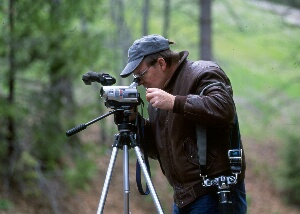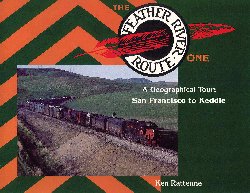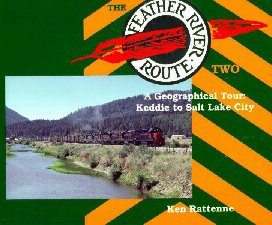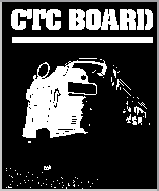| In The
Beginning
Ken continued living in the San Jose area (now dubbed Silicon Valley) until 1988 when he moved 90 miles east to Modesto, in California's great Central Valley. He'e been there ever since. A Love Of TrainsWhen asked, Ken will tell you he has been fascinated with trains since...well, as far back as he can remember! He received his first electric train set at age 4 and continued an interest in model railroading until 1971. It was that year he discovered photographing real trains was a lot more fun than modeling them. For the next few years Ken shared modeling trains with shooting them, albeit with an Argus 620 box camera given to him by his father. By 1977 Ken had forsaken N Gauge trains for pair of Nikons. His destiny was clear! He would document the changing railroad industry, and maybe get something published along the way.By the late 1970s, Ken was submitting photographs for publication to railfan magazines, quickly becoming a regular contributor to CTC Board, Pacific News (later Pacific RailNews) and Passenger Train Journal (PTJ) magazines. Ken also became a frequent photo contributor to Joe Strapac's popular Southern Pacific Review book series, which also helped to popularize his lens work. By 1982 Ken saw his first feature article appear in PTJ, covering Amtrak's then-emerging San Joaquin corridor in California's Central Valley. Photography Ken's first camera was an old Argus box camera handed down to him by his father. It used 620 film and took images good enoug h to make good scans some 40 years later. In 1976 Ken bought his fiirst Nikon camer, a Nikkormat model that had a very finiky light meter. In theearly 1980s Ken upgraded to a pair of Nikon FM2s which were his primary tools until 2006 when he bought a Nikon D200. In 1992 Ken Ken bought his first
video camera, a Sony Hi-8 model that served him well until 1996 when it
went south. Next it was an upgrade to Sony digitial Hi-8 and in 2007, when
that camera was dying a slow death, he bought his first prosumer model,
a Canon XH-A1. Ken has a passion for video editing and creating finished
DVDs that are entertaining to those who watch.
|




 Beginning
in 1992 Ken began working on a magazine project documenting the pair
of interlocking towers still in operation in the San Jose area. The "San
Jose Sentinels" manuscript was delivered to Pacific RailNews magazine
in 1993, where it was subsequently published in November of that year to
critical acclaim. The "San Jose Sentinels"
Beginning
in 1992 Ken began working on a magazine project documenting the pair
of interlocking towers still in operation in the San Jose area. The "San
Jose Sentinels" manuscript was delivered to Pacific RailNews magazine
in 1993, where it was subsequently published in November of that year to
critical acclaim. The "San Jose Sentinels"